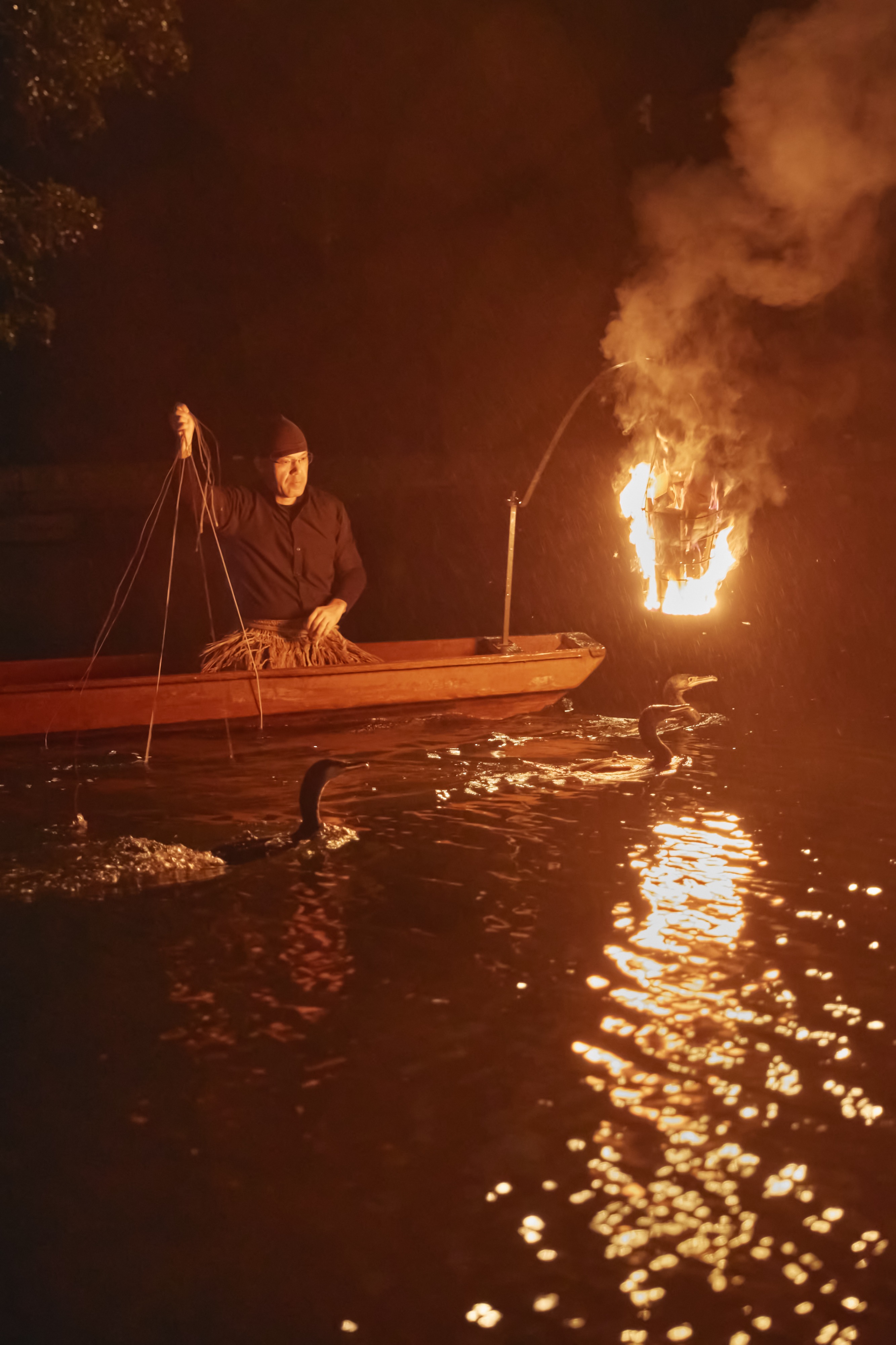
Cormorant fishing 2
Cormorant fishing is a fishing method in which cormorants are skillfully manipulated to catch fish in rivers. The history of cormorant fishing is ancient, with descriptions of cormorant fishing found in the Kojiki (Records of Ancient Matters) and Nihonshoki (The Chronicles of Japan), which were written in the 8th century. In Japan, cormorants can currently be seen in 11 places, including Hita. Cormorant fishing began in Hita about 400 years ago. It is said to have started when a deputy sent to Hita in the Azuchi-Momoyama period invited cormorants from the Nagara River in Gifu Prefecture to perform cormorant fishing. On 22 March 1966, it was designated an Intangible Folk Cultural Asset of the prefecture. There are several techniques for cormorant fishing, and in Hita's cormorant fishing, the three roles of cormorant master, cormorant and pole-operator work together to carry out the fishing. The cormorant controls the cormorants and carries out the fishing, while the boatman, called zozozashi, skillfully manoeuvres the boat with a bamboo fishing rod to support the cormorant fishermen.